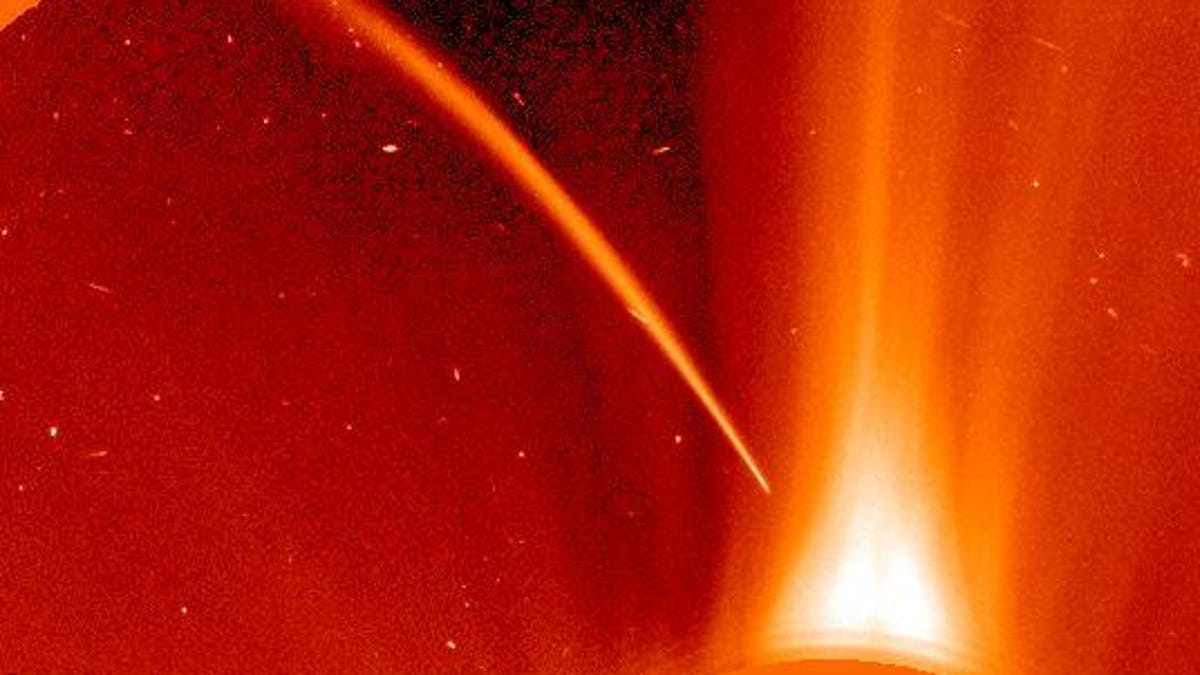Total solar eclipse may reveal a new comet you can see
When the sun goes dark for people in the path of totality, the stars will come out. It may also offer the rare opportunity to see a sungrazing comet with the naked eye.

A Sungrazer comet recorded by the SOHO spacecraft's Large Angle Spectrometric COronagraph (LASCO)
When the sun disappears during a total solar eclipse across the United States on Aug. 21, the stars and a few planets should become visible for a moment. But that may not be all you'll be able to see during the odd period of daytime darkness.
There's a slim chance you could spot a so-called "sungrazer" comet next to the darkened disc of our star during the eclipse.
While there's no official definition of what makes a comet a sungrazer, the basic concept is that they make their pass around the sun at a relatively close distance, which can make them hard to see in the process as the intense brightness of our star drowns everything else out.
To spot sungrazers, astronomers use a type of telescope called a coronagraph. It essentially creates a false eclipse by staring directly at the sun while blocking its blinding light with a solid disc that makes it possible to see the more faint objects around it.
"What this means for us is that for a few brief minutes during the eclipse totality, observers on Earth will be seeing more or less exactly what our telescopes are seeing in space—and that might include a comet!" said Karl Battams, astrophysicist and principal investigator for the NASA-funded Sungrazer Project, in a blog post.
Unfortunately, Battams says August is not a great month for spotting sungrazers due to the viewing geometry involved. He estimates there's about a five percent chance of a comet being near the sun during the eclipse.
Still, Battams and colleagues plan to keep watch.
"If we're really lucky, (we'll) get maybe a day's advance notice that one will be near the Sun during the eclipse."
So he plans to scour images from the big coronagraphic telescopes like the US Naval Research Laboratory's Large Angle Spectrometric Coronagraph (LASCO) telescope for comets in the days leading up to Aug. 21. If there's a chance of seeing a comet, he'll post all the details to his Twitter account a few hours before the eclipse on Monday.
"I will give clear instruction on whether a comet is known to be near the Sun, how bright that object might be, and how/where you might be able to see it," Battams writes. "Our odds truly are slim, but the payoff would be awesome!"
Crowd Control: A crowdsourced science fiction novel written by CNET readers.
Solving for XX: The tech industry seeks to overcome outdated ideas about "women in tech."

